


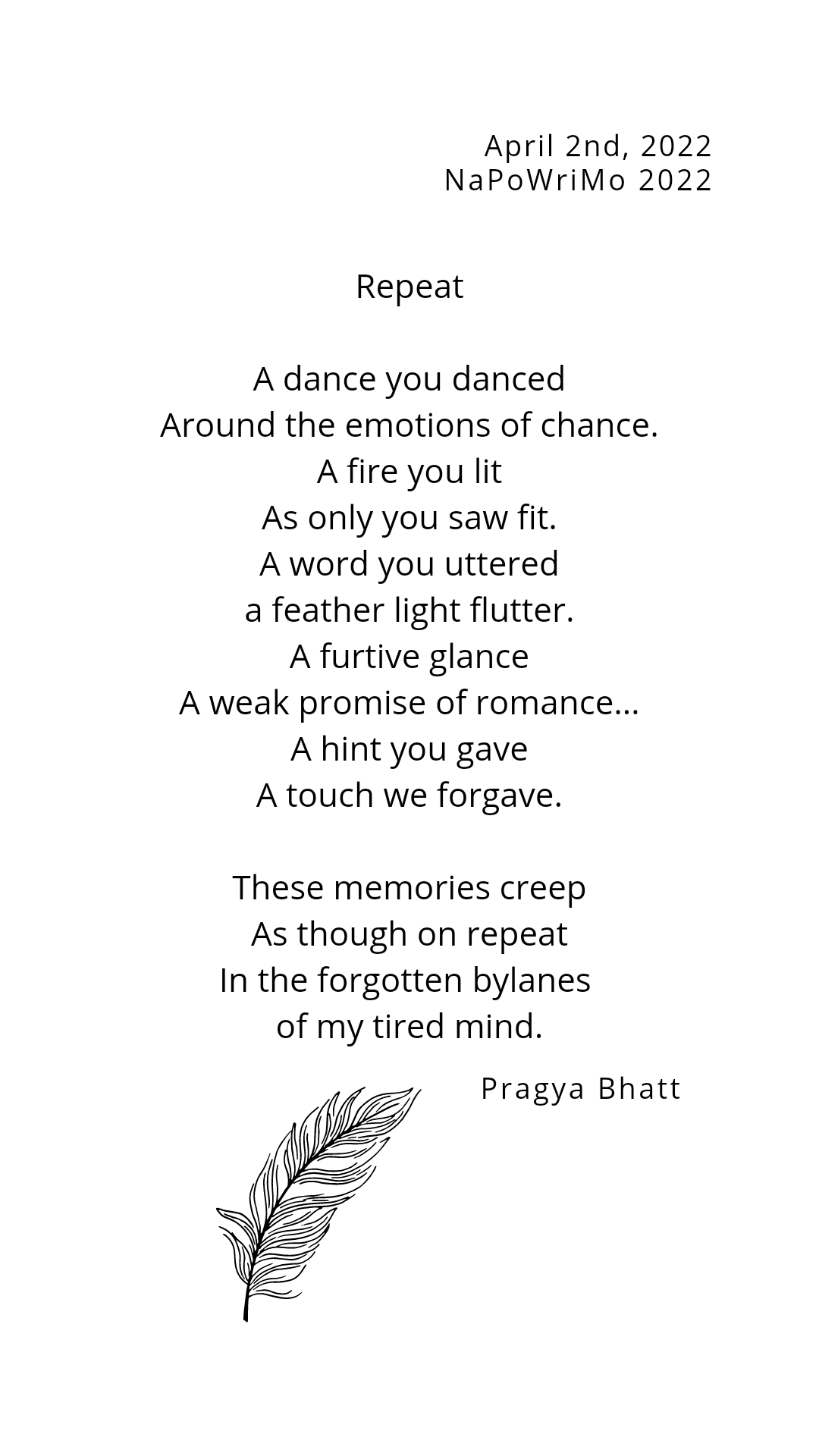

I learned how to swim pretty late in life (early 30s) thanks to a Mrs. Vardhan who was generous with her patience and with her time. I wanted to learn because it’s a wonderful workout, and therapeutic at that. Little did I know that one day I’d be swimming with sharks in the expanse of the great Indian Ocean.
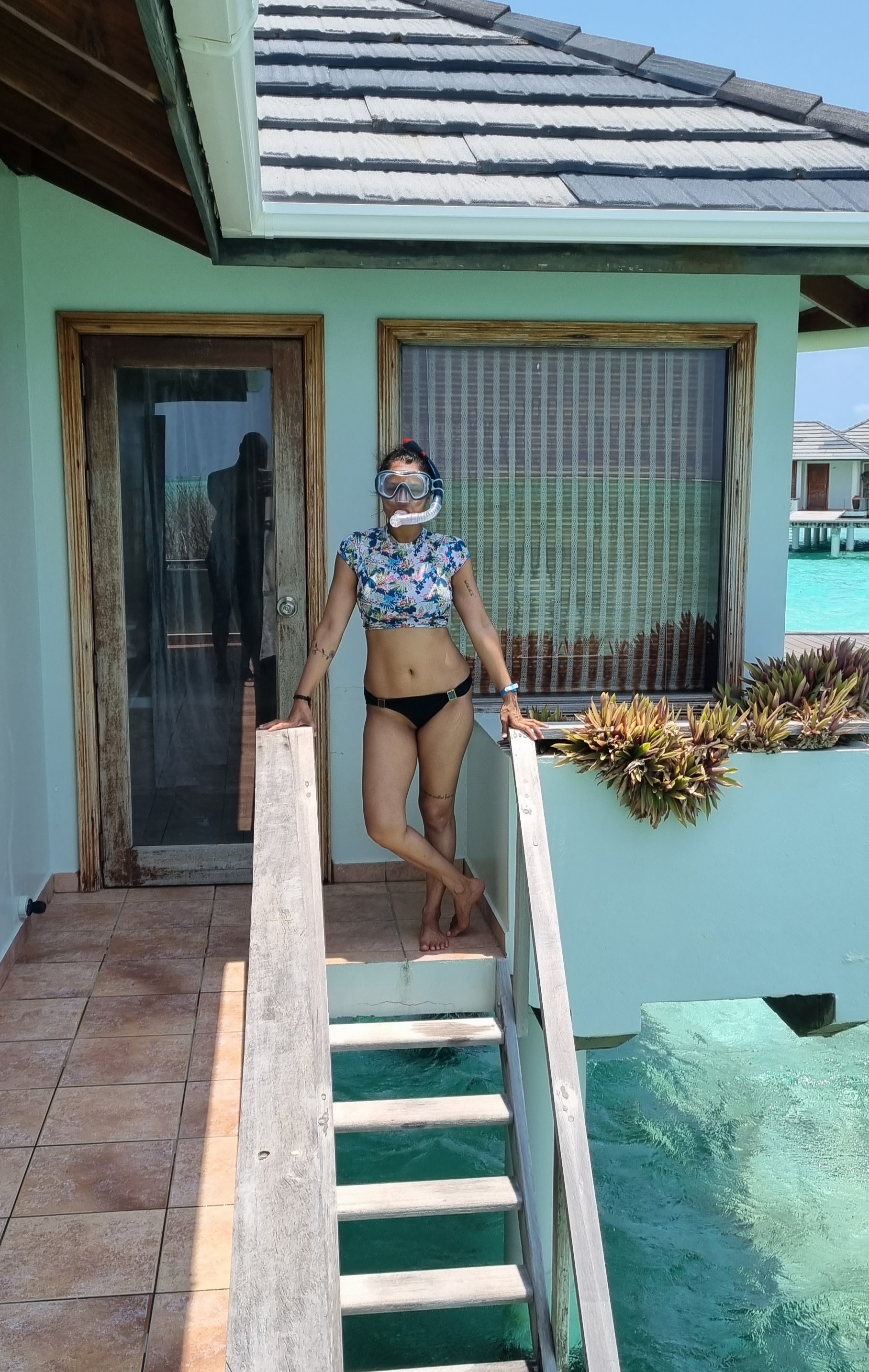
All set to snorkel near our water villa. Sea life differs from area to area and we looked forward to seeing the variety of fish surrounding the island.
My first experience of snorkelling was years ago during a school trip to the Andamans. My memories of that experience aren’t particularly fun, so I wasn’t overjoyed about snorkelling in the Maldives (at the Sun Island Resort). But Animesh was super excited, and so off we went. It wasn’t until I got into the choppy waters with the snorkelling gear jammed tightly over my face did I recognise that the discomfort I was feeling was actually a sense of fear. I was out of my territory – I’ve spent years training myself to breathe deeply through my nose. Breathing through the snorkel with my mouth felt strange, unnatural and very very uncomfortable.
BKS Iyengar famously said, “Your nose is for breathing and your mouth is for eating. If you breathe through your mouth I will put food in your nose.” Under the water, with tiny (and not so tiny) fish flitting all around me, I strained to inhale and exhale through my mouth. And then it dawned on me that a truly flexible human isn’t one who is able to breathe rhythmically when on a yoga mat with the intention of doing so. True flexibility is being able to breathe in whatever way the situation demands. So, as I struggled to get comfortable in the depths of the Indian Ocean, I forced myself to calm down. I started to engage my lungs to breathe deeply and rhythmically through my mouth.
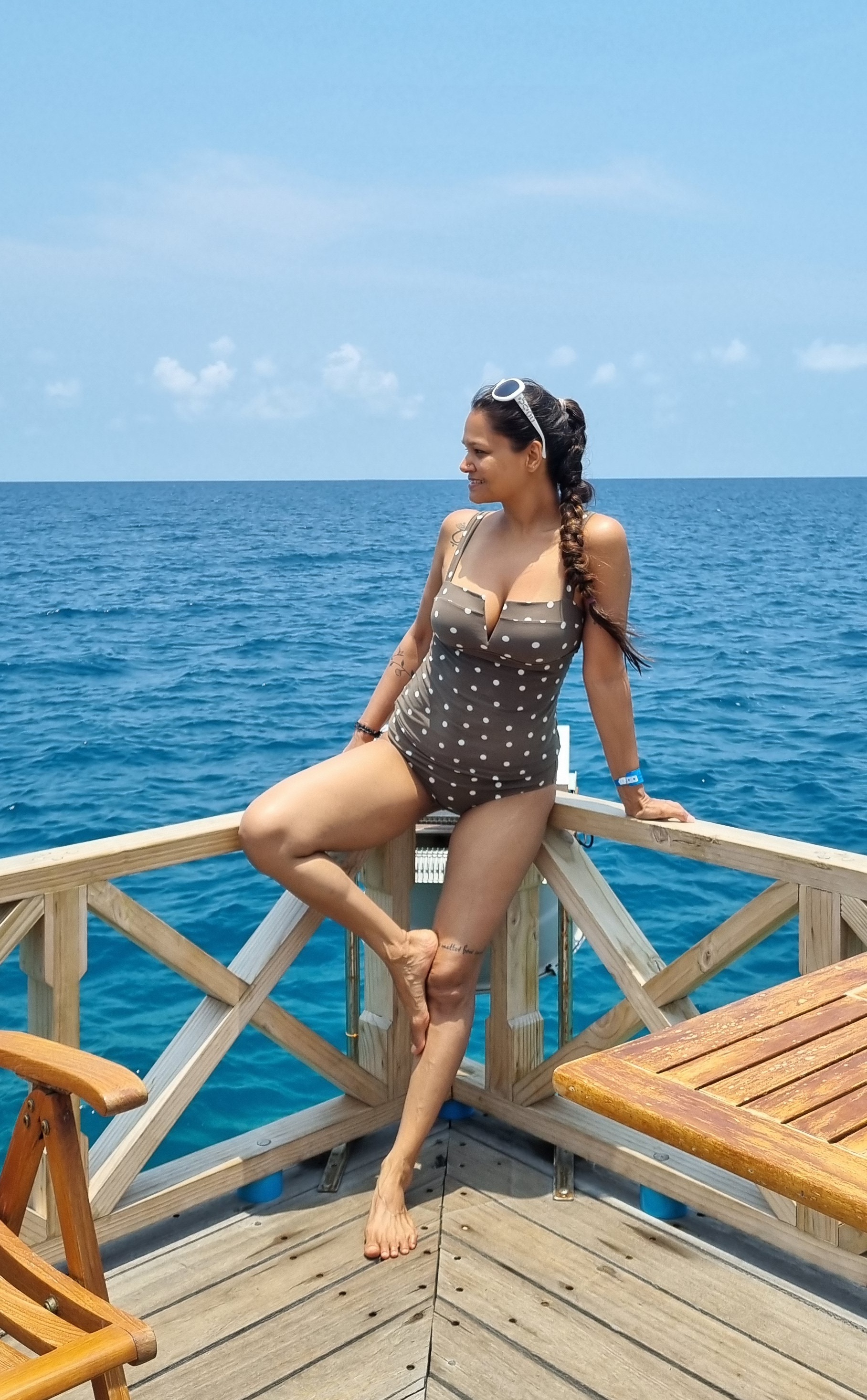
A lazy tree pose on deck. Happy to see the sharks and other fish up close.
Recently I lectured my students about the importance of cultivating a self-practice. When there is no self-practice, yoga is merely an activity confined to our mats and we remain limited to and by our physical boundaries. Our physical boundaries are a fraction of what we are as humans. The expanse of the human mind is more vast than the Indian Ocean, and just as interesting. When we practice by ourselves, devoid of the expectation of cues and the ‘experience’, we can begin (and hope) to tap into this space. In this space lies the ability to breathe better when needed, to calm down and detach, to relate to others more intelligently, to listen to the wisdom our inner voice and to marvel at the plethora of life in the universe,
Once I worked this out in my mind, swimming in the ocean seemed like an extension of my practice. I observed more, moved my arms and legs in different ways, swam in place or in circles, didn’t panic at the sight of sharks or a little water in my face mask, and most importantly, was able to explore more of the deep blue sea…
The Adi Yogi statue is built of steel and placed on a raised platform. It’s visible as you enter the Isha Yoga centre.
A dip in sacred waters is a mainstay of Indian civilisation, and it’s common to see people taking a dip in one of the numerous rivers in the country. I never thought I’d actually do it myself one day…
Sowmya and I arrived at Isha Yoga centre early one morning, hoping to beat the usual crowds. But the day we chose was only 4 days ahead of Maha Shivratri and the devout were up and they were about. Hordes of selfies were being taken in front of the Adi Yogi. It was only 8 am, but the places was bustling with activity. A large stage was being constructed and barricades were being erected to keep the imminent crowds in check. Announcements were blaring from the speakers.
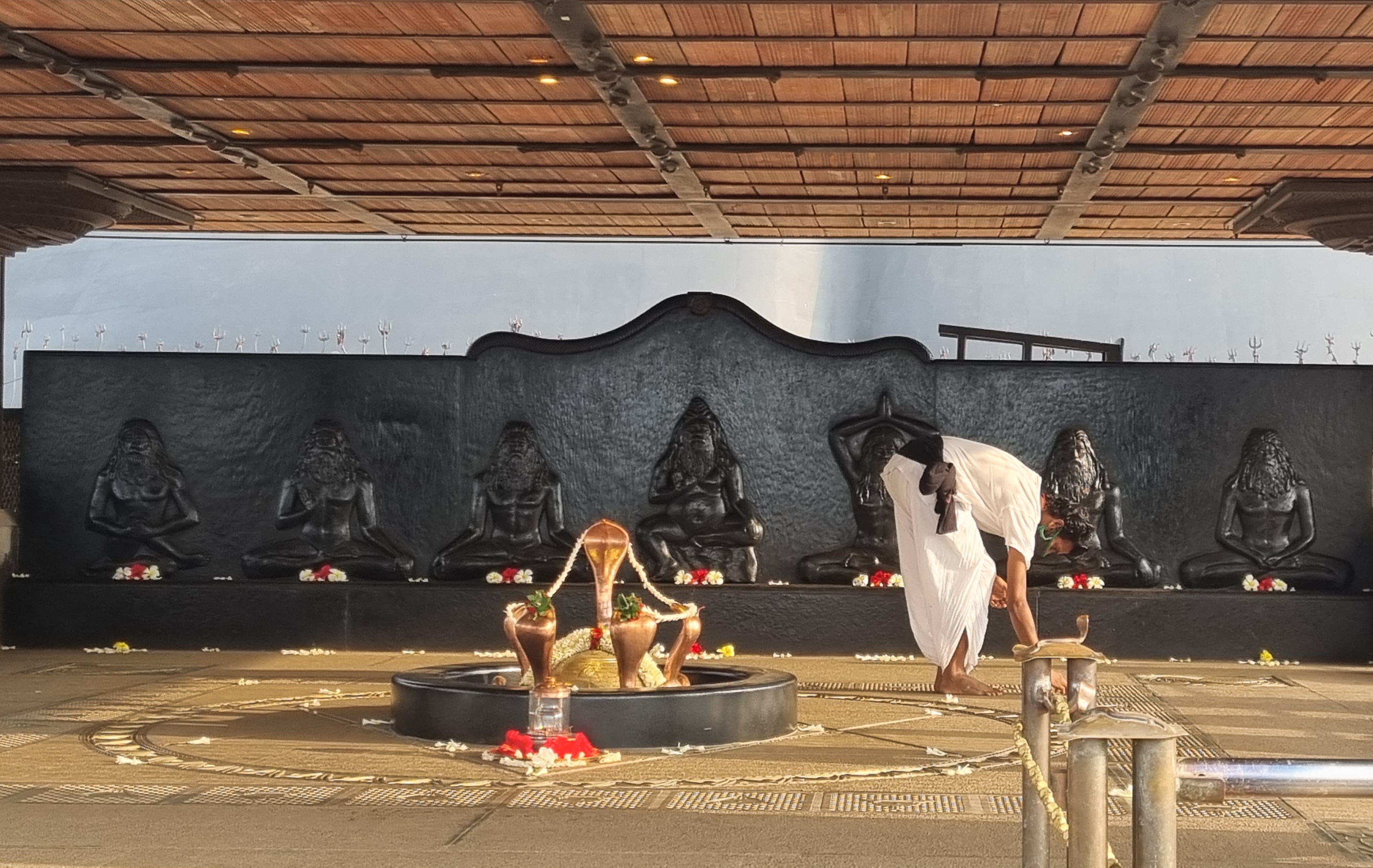
A beautiful mural of 7 siddhas. In the temple in front of the Adi Yogi temple at the Isha Yoga Centre.
In front of the Adi Yogi statue is a temple where daily homas are done. We reached the temple as special morning prayers on account of Mahashivaratri were were being conducted. We had a chance to sit around the fire listening to the chanting. There is a metal lingam in the centre of this temple (several people were doing parikramas around it). Coiled around the lingam are 5 metal serpents of various heights. Behind is a beautiful mural of 7 siddhas. Several people were doing the sashtanga namaskars in front of these statues and the lingam.
After about 10 minutes we got up and decided to walk further into the ashram. Before entering into the grounds of the main ashram, we were asked to deposit our phones and other valuables (except our wallets) at the security. We were also allowed to take our towels into the ashram, for which we were given a bag at the security.
The Isha Yoga Centre has two kundas – water tanks for men and women to bathe in and thereby purify themselves. The Surya kunda is for men and Chandra kunda is for the women.
To bathe in the kunda, you’ll be given ochre robes by the centre. You will need to take a shower first. I was hoping no one would notice that my hair was dry, but they did, and I was promptly sent back to the showers to rinse my hair.
The kunda is artfully designed. As we descended the large stone steps, I was reminded of the Kamakhya temple. Unlike the Kamakhya temple, the Chandra kunda is man-made and designed to be rustic yet elegant. It is carefully cultivated class – a 5 star temple water tank – as Sowmya puts it. Silence is mandatory here, and it seems to reverberate within the tastefully designed stone dome of the kunda, adding to the somber mood. There is a small waterfall on one side and as I descended the metal stairs on one end, I felt the weight of the heavy silence closing in on me. The kunda is windowless, and the cold water is about 4 feet deep. There is a huge shivalingam in the centre – made of a stone base and a metal dome jutting out of the water. We circumambulated the lingam in the water, savouring the resistance of the water on our relaxed limbs, the splashing sound soothing to the ears too.
Once we exited the Chandra kunda we decided to visit the Bhairavi Temple. This too has a cave-like structure and early in the morning the sounds of the aarti and accompanying chanting were steadily reaching a crescendo. The devotees were engrossed in their devotional practices, and there was no social distancing. Not too keen to be a part of the melee we decided to exit.
We continued practicing our silence as we entered a doorway to get to the famed Dhyana Lingam. On either side of the hallway leading to the Dhyana Lingam there are stone murals depicting various scenes from mythology about devotion. Sowmya and I were happy to see a huge statue of Sage Patanjali. The Dhyana Lingam is housed inside a huge dome shaped hall specially made for meditation. The shivalingam stands tall and imposing in the center of this hall and is decorated with flowers. There are squares compartments cut into the walls to sit and meditate in. There is no artificial light here, and the style is similar to the Chandra kunda – stone, understated, elegant. For a fee you can also light a lamp and offer rudraksha of various prices to the Dhyana lingam.
Sowmya and I found a square each and enjoyed some of the serenity for half an hour.
After a bit of shopping at the gift shop (I picked up their famous sambramani) and some breakfast (steaming hot idlis and some pongal), we decided to walk past the famous tamarind tree and the nandi in front of it. The Nandi is five times the size of a real one, and made entirely of black stone. The tamarind tree is covered with threads and other pieces of cloth (mostly fuchsia, red or black). Those who complete the challenging Shivanga sadhana gain the privilege of tying these cloths/threads on this tamarind tree. The Shivanga sadhana is a special 42 day sadhana that only the most devout can complete. It is believed that our sweat contains our samskaras and when these are absorbed (along with our sweat) into the clothes we wear. By tying these clothes around the branches of the tamarind tree, we rid ourselves of our samskaras.
The experience of the rituals and worship at Isha yoga differed so much from our experience at the Perur temple, just a few kilometres away. It is said that there are as many beliefs as there are people in India. Experiences like this one certainly gives us insight into just how complex, intricate beliefs, culture and traditions can be.
If like me you’re a temple buff, then make sure to check out this blog about the Koti Lingeshwara temple on the outskirts of Bangalore, a temple that has one million shivalingas!
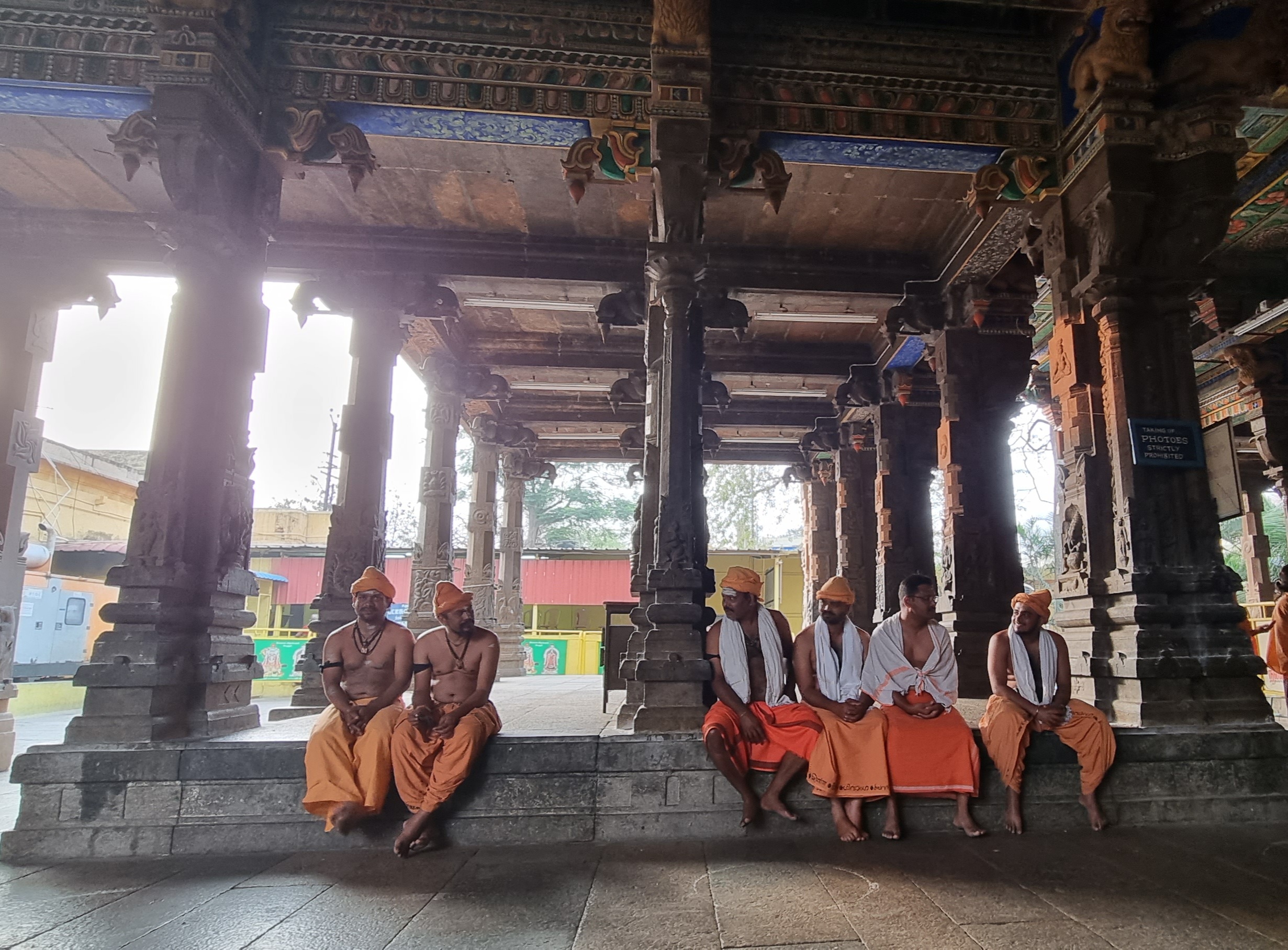
Off duty priests.
Once I realised that deeper study of yoga needs a closer look at it in its cultural and traditional context, I started to consciously seek out yoga stories and connections in daily life in India. In retrospect, I’ve been doing this ever since I started researching for my book ‘Beyond Asanas’. Perhaps if I hadn’t been on this quest, I wouldn’t have had the unexpectedly special Mahashivaratri experience I had this past weekend…
On the way back from our recent vacation in Coorg, we decided to take the road less travelled.
The road was scenic, bucolic and mostly under construction. We crossed a flower market and picked up some jasmine for our hair. And finally, looking at the map we decided to take a small detour to Shravanabelagola. Shravanabelagola is one of the most important Jain pilgrimage sites in the world. It is marked by the presence of a 58-feet tall statue of Bahubali. I’ve been to Shravanabelagola before and trekked all the way up to the deity. This time we were hard pressed for time and couldn’t do that, but there was another delightful surprise in store for us.
The Jain maṭha that maintains the temples in Shravanabelagola (including the Gomateshwara) also has its own temple, which we visited. I saw some incredible murals on the wall. I hope the maṭha restores them in the future. For now, they’ve put up barricades to discourage the poking of curious fingers.
Some of the murals:

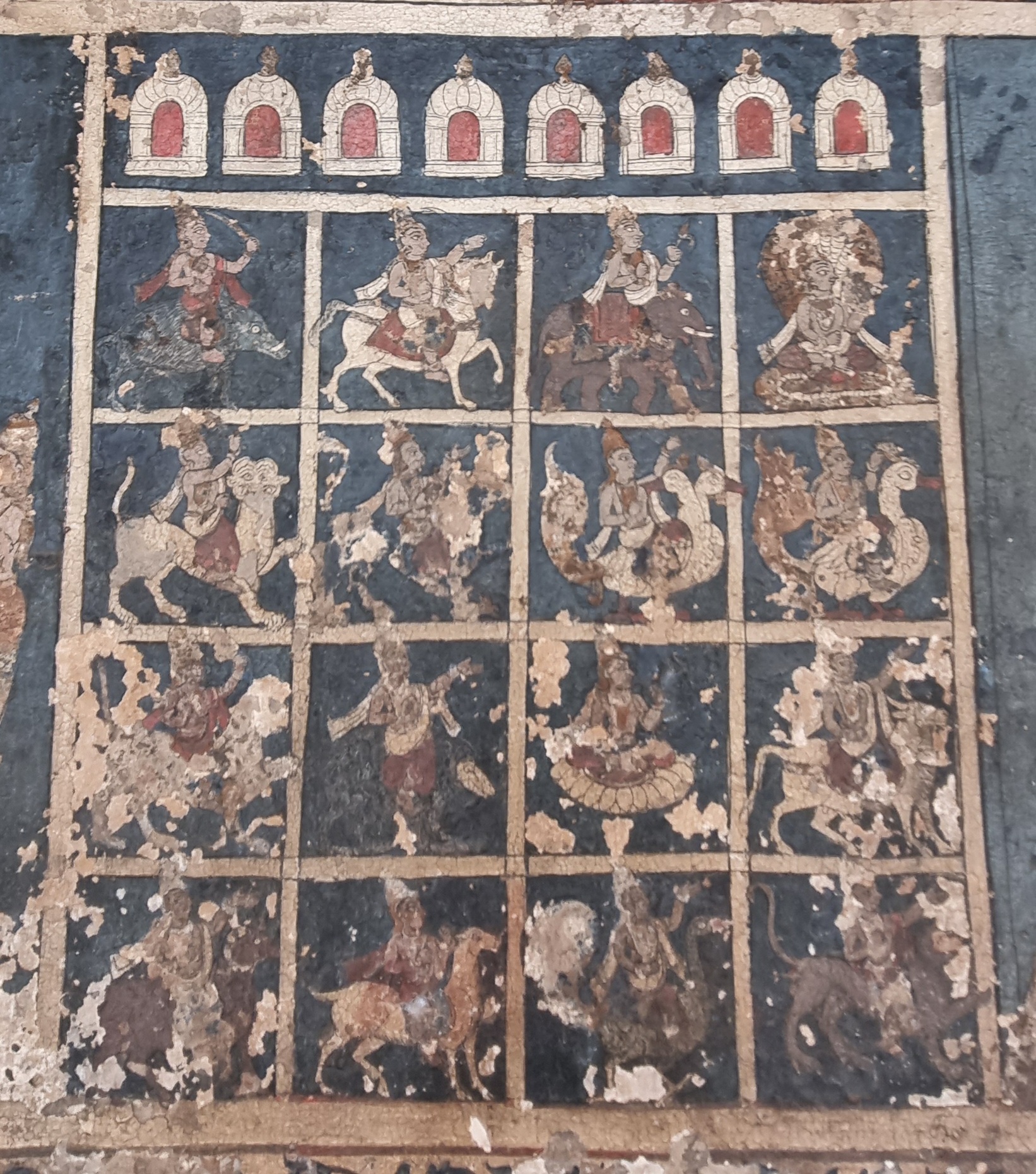
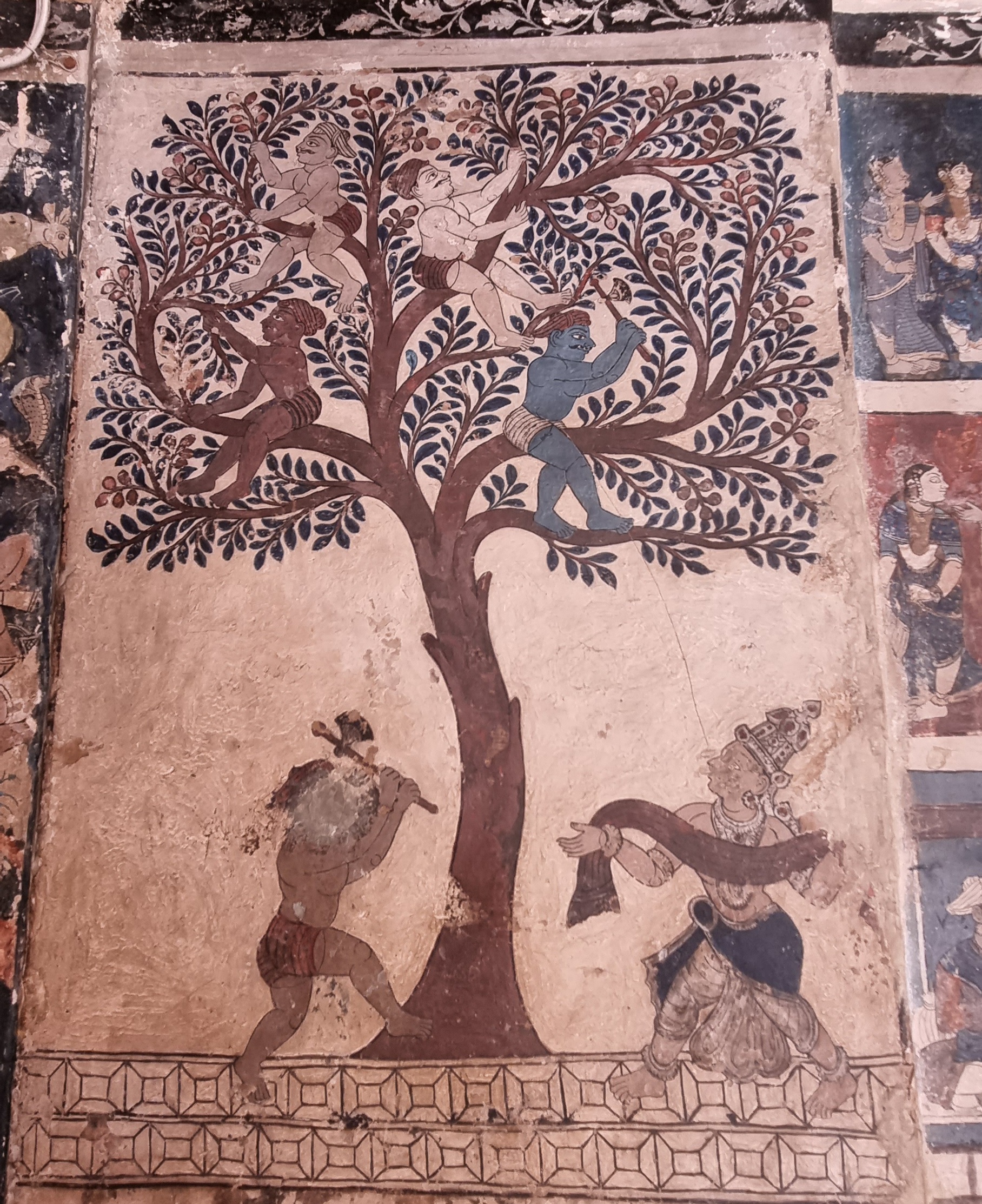
It is no coincidence that NIPSAR is in Shravanabelagola and is also a major attraction for Jains and scholars of Jainism. Most ancient Jain literature is in Prakrit, and this institute was established for the study of Prakrit. It houses many manuscripts, most of which are more than 500 years old. I was very interested in seeing these manuscripts as I had only seen pictures of original texts but had never actually seen one in person.
We were well received at the institute by a few of their scholars, who proceeded to give us a tour of the institute and show us the original manuscript of the ‘Gurudev Charite’, which was from the 10th century. Along with this they showed us the restoration and translation work that is currently underway of the ‘Trishashti Lakshana Mahakatha’ – a collection of talks about the Jain tirthankaras. The ‘Trishashti Lakshana Mahakatha’ is also known as the Chavundaraya Purana and was written by Chamundaraya. Chamundaraya was a military commander, a poet, an architect and a statesman, who lived from 940 CE to 989 CE. He commissioned the building of the statue of Bahubali found in Shravanabelagola. The Trishashti Lakshana Mahakatha is the second oldest existing work in prose in Kannada. Chamundaraya meant for this work to be read by the masses and therefore wrote it in Prakrit and ensured it was easy to read by the masses. It relates the legends of a total of 63 important figures in Jain history.
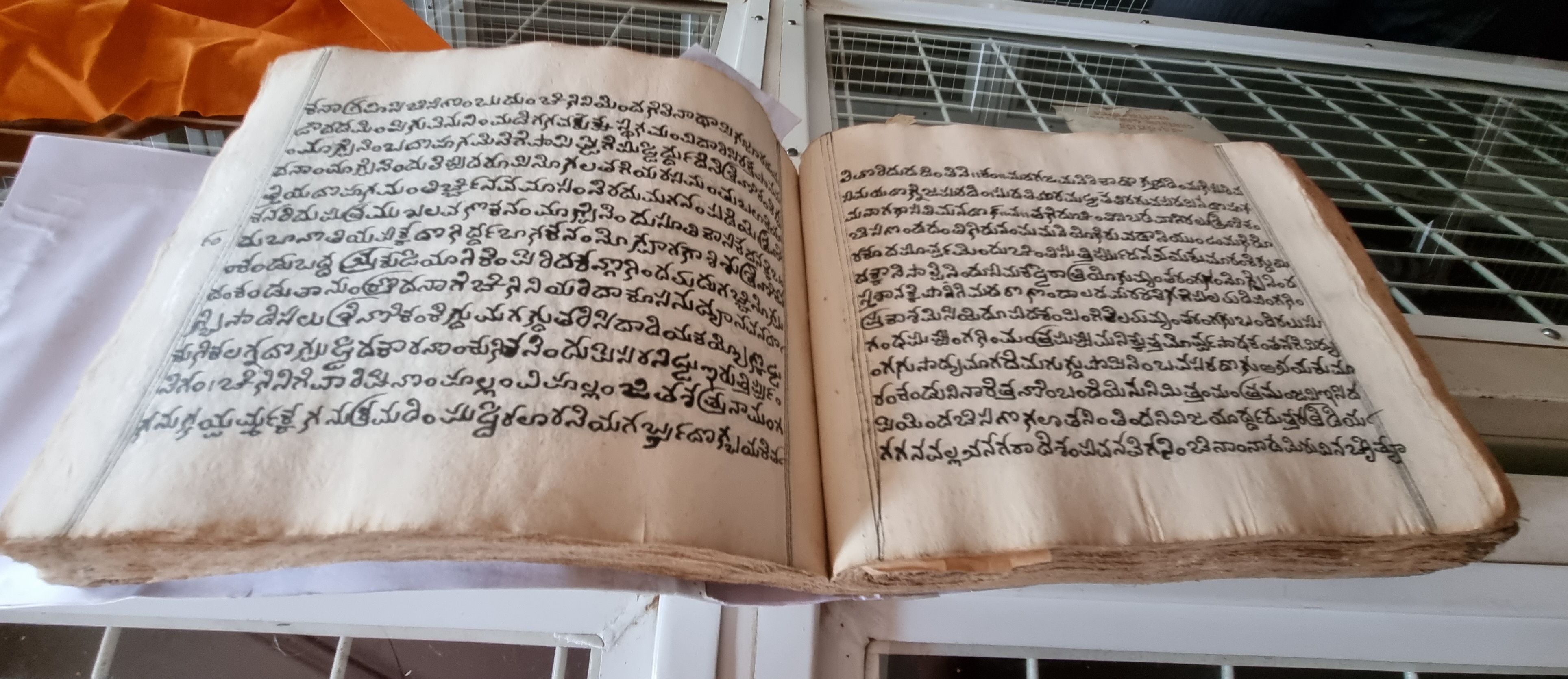
An original manuscript in Nadugannada or Medieval Kannada.
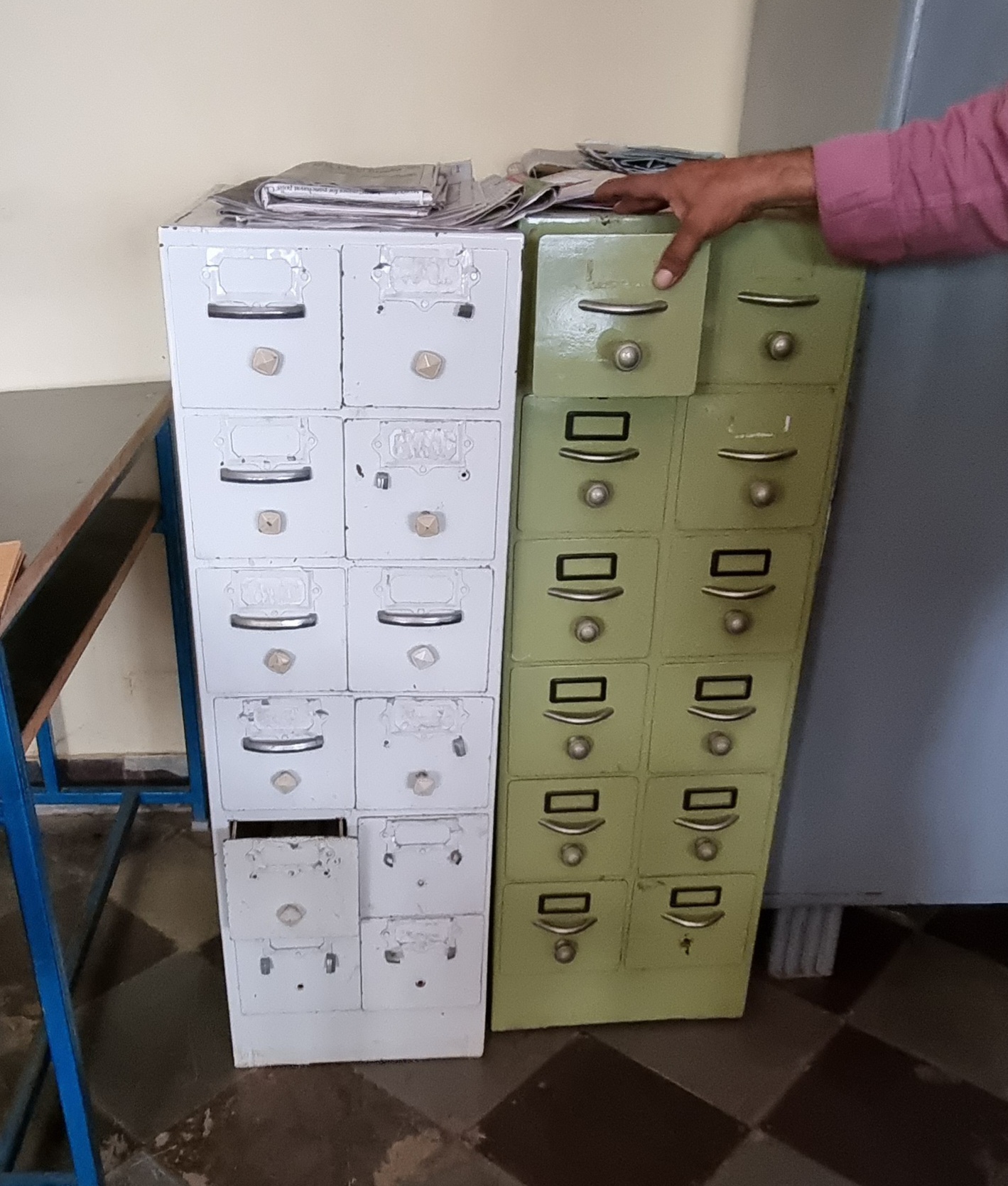
It’s been a while since I’ve seen a card catalogue!!!
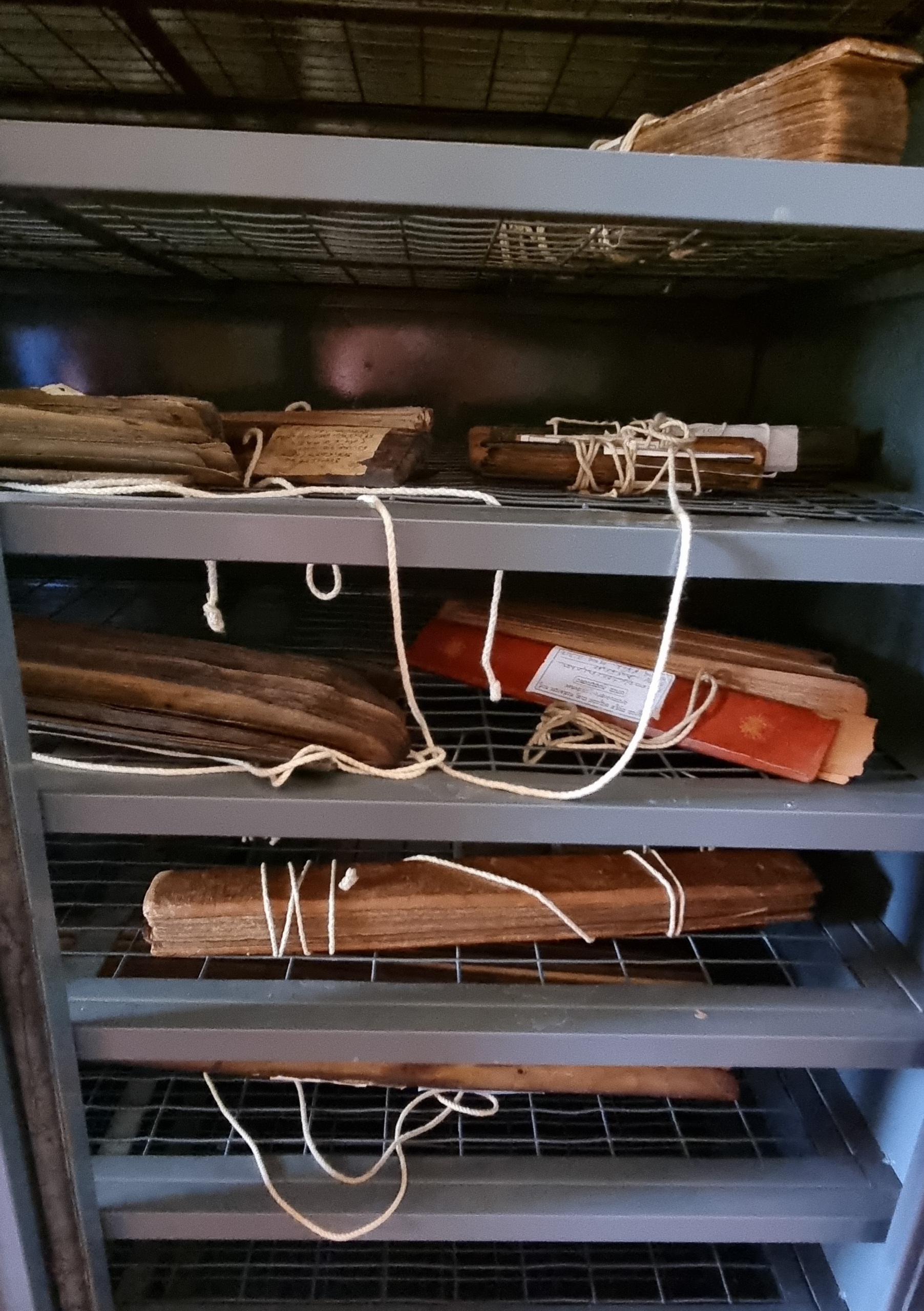
Reams and reams of texts – a library such as I have never seen before!
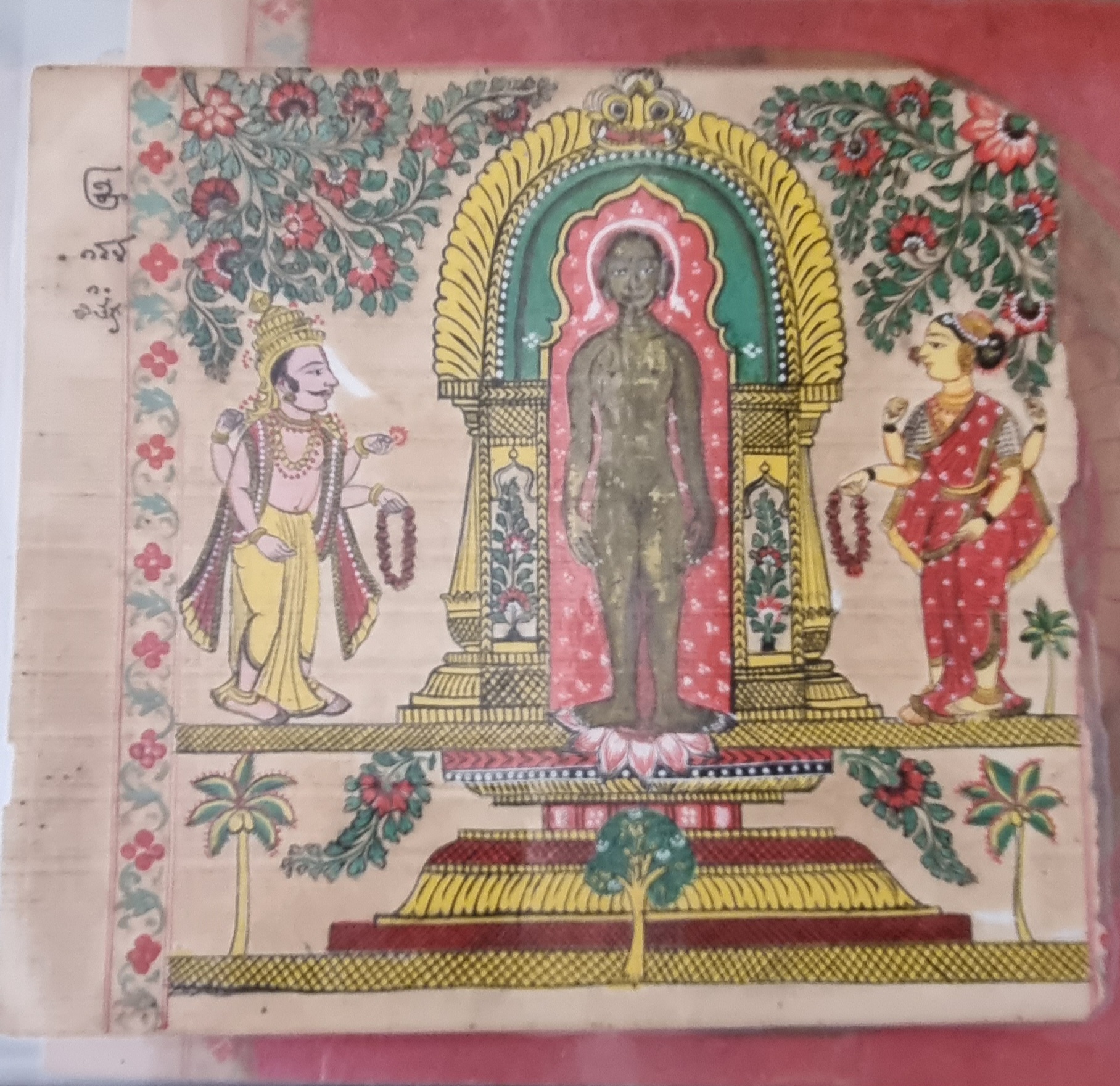
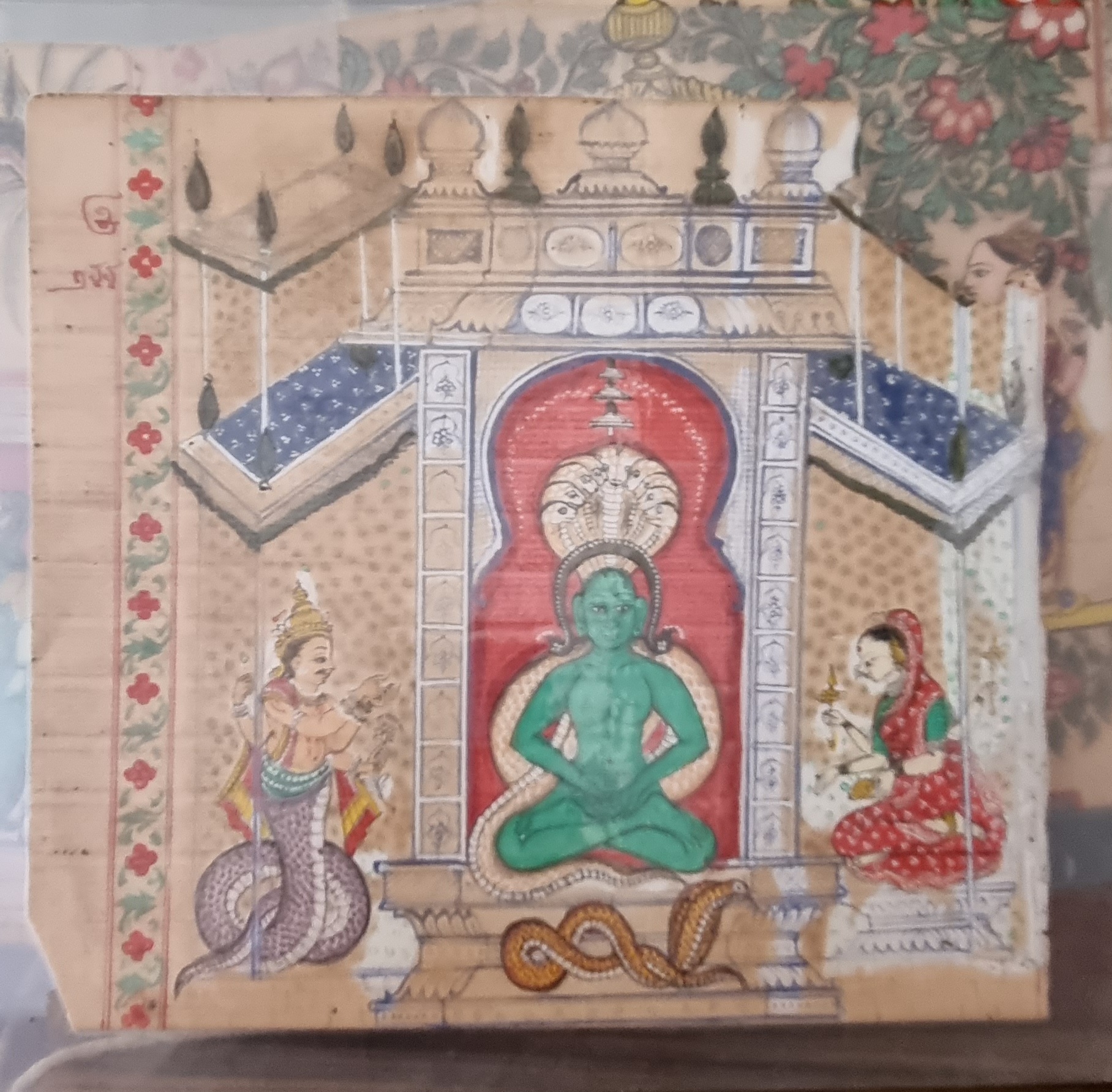
NIPSAR also works on restoration of other artefacts. These are made on parchment made of coconut bark, using natural dyes.
Although I’ve always been interested in yoga philosophy and texts, its only recently that I’ve started to contextualise it. This was partly due to the exposure I got during my master’s at SVYASA (studying the Hatha Yoga Pradipika and the Patanjali Yoga Sutras in a cultural context). Hence, my interest in not only yogasana but also in everything (peripheral) about yoga. I found that the more closely I look at the society and culture surrounding the practice of yoga, the more insight I gain into the subject.
When I started studying Vedanta, I realised that the Sanskrit I learned at SVYASA came in handy. Although numerous English translations and interpretations of yogic texts are available, to be able to read the original script forges a connection that is highly empowering.
It’s hard to describe what it feels like to hold such ancient literature in your hands. It’s not only what you’re holding, but the fact that this is intimately connected to something you’ve been immersed in for a decade. Which was another reason why I was so keen to visit NIPSAR.
So do you need to learn Sanskrit/Prakrit if you’re interested in yoga? In my opinion no, but if you do then you’ll be privy to a whole new dimension of the subject.

What a beauty.
I grew up on a steady stream of Nancy Drews. I was an obsessed reader – steadily going through the entire collection in my school library. And then moving on to the local library. I would sometimes read an entire novel in a single day! I wanted to be a detective when I grew up, complete with the red hair, the red convertible and new adventures. I didn’t become a detective and my hair has never been red (although it’s been a lovely shade of fuchsia). Perhaps the closest I’ve come to being like my childhood idol is my red car (although I’ve never had a convertible).
I bought my first car after a brief stint in the UK with Infosys. I was feeling very much like a woman of the world and pictured myself in my own car, cruising across the city doing very important things. I wanted something with character and an old world charm and I looked everywhere for a red Maruti 800, and found to my disappointment that they were no longer in production. So I bought the car closest to the red 800, a firebrick red Alto LXI. My Alto added a zing to an otherwise dull corporate life – my friends and I rode to work in style, not having to worry about catching the company bus on time. We no longer depended on Meru cabs to ferry us to social commitments, we had the trusted Alto. The Alto saw me driving to job interviews and eventually to a new workplace. It saw me quitting my job to follow my passion – and it metaphorically drove me to it.
I recently watched a poignant episode of ‘Modern Love’ centred around a car, and when I recently sold my Alto, I realised that our vehicles give us freedom and independence. They teach us responsibility and confidence to take on new adventures. From tentative trips to the grocery store (always nervous about the parking), to negotiating the hairpin bends en route Coonoor. From driving myself to yoga classes, to driving across the city for teaching gigs. My Alto took me to Vipassana twice, parked in the dusty parking lot for all 10 days, both times. In 2011, I took it to SVYASA to complete my month long YIC, and in 2019, I drove it back to SVYASA to register for the MSc.
I’d started using it a lot less recently because of the lockdown. The radio didn’t work as well anymore, and the tyres have been changed several times. Yet it still that feel of a giant blazing fireplace on a cold winter’s day. We drove the Alto to Coles Road to register our wedding – it was small enough to fit into tiny parking spaces on teeming Indian roads.
Life has changed a bit now. I no longer have to drive everywhere to attend or take class. I ended up marrying a very tall man who ends up using the car more than me – and a tiny Alto is too small for him. I reluctantly decided to change my car and get a larger one, and ironically, this car also happens to be red. I guess subconsciously I’m still Nancy Drew. And just like Nancy Drew, I’m excited about future adventures in this spanking new red car.

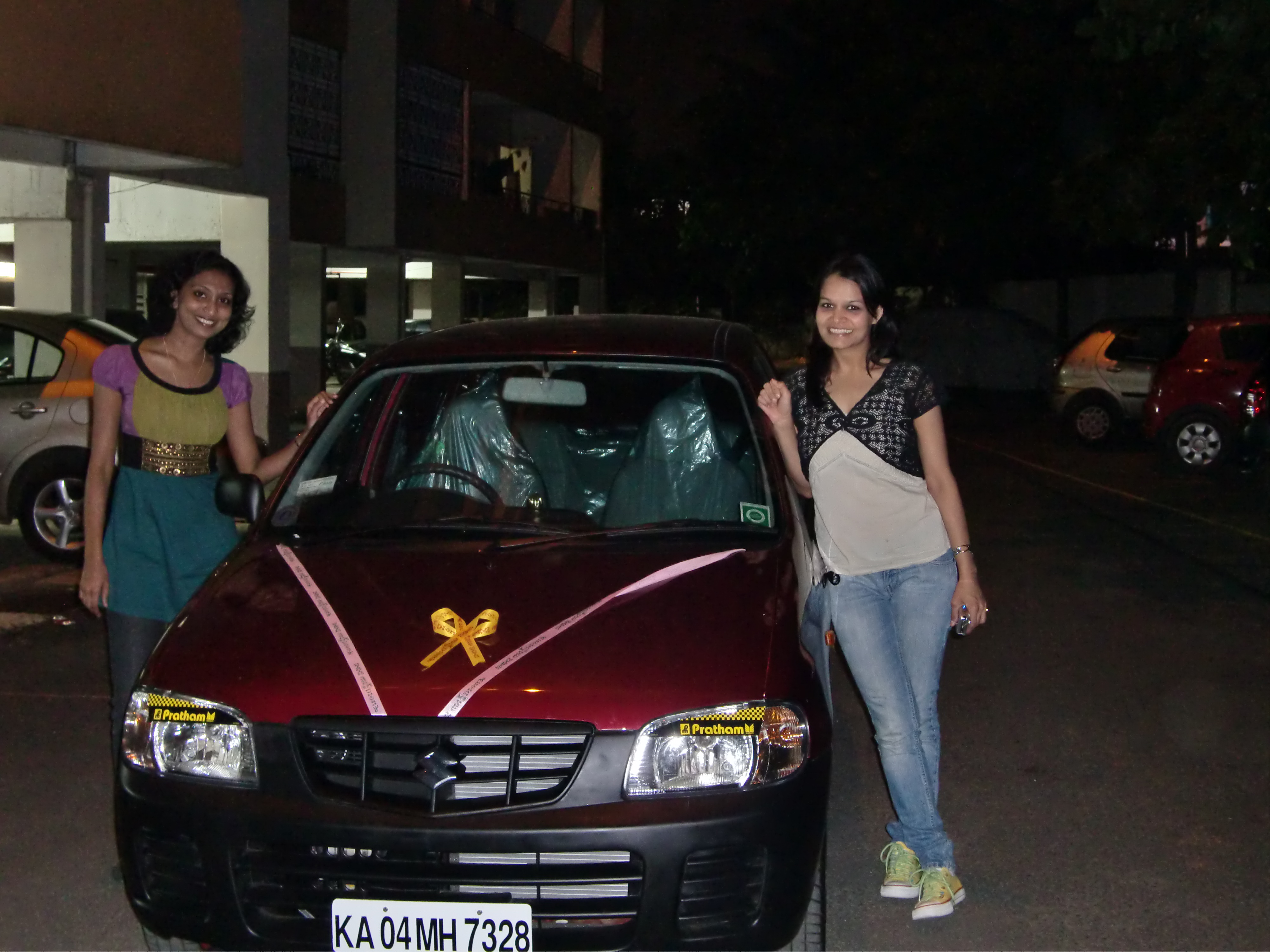
Lakshmi and I bringing the Alto back to Pride Apartments.

Animesh and I very happy with our purchase.
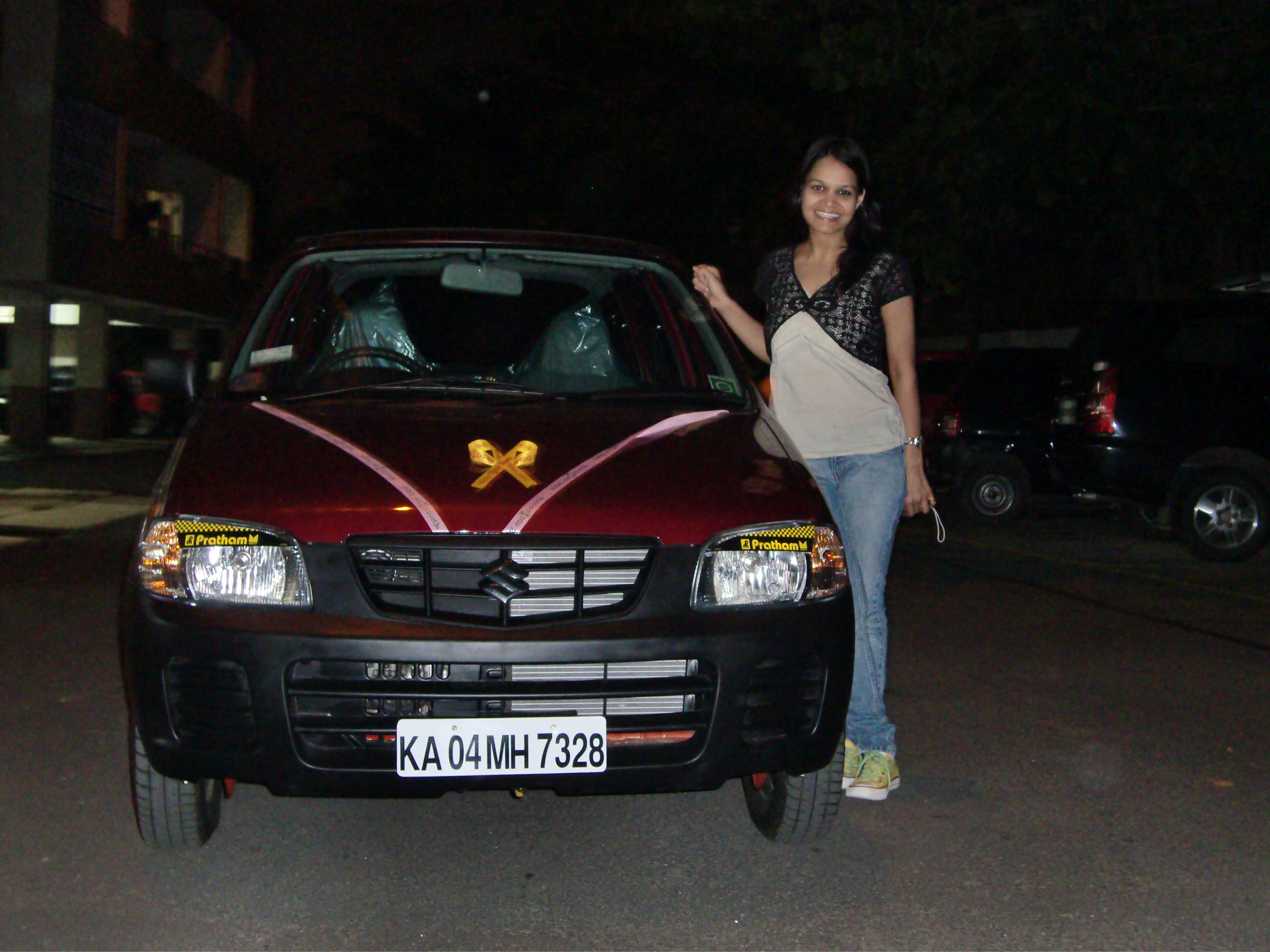
Oct 24, 2010

Jan 21, 2022

Onwards to new adventures.
“Chai lenge aap?” Govind asked me as I browsed through the clothing racks. It was our third day in Dharamkot.
“No,” I politely declined.
“Matlab aap jaisi chai bhi mil jayegi,” he said. When I looked askance, he quickly went on. “Mera matlab vegan walli chai bhi mil jayegi.”
“Ok,” I agreed. “Par bina cheeni ke.”
I was on the lookout for some gifts and someone had recommended this wonderful shop in Dharamkot. I proceeded to pick out a few shawls, pyjamas, a bag and even a pair of shorts for yoga practice!
Selection done, Govind put out a small stool for me inside the shop. I surveyed his shop through the steam of my soy milk chai. His shop doubled as his workshop, with two industrial sized sewing machines. “I’m working on money belts these days,” he told me, indicating to the belt bags hanging outside the shop. “There’s been a demand for these.”
I looked appreciatively from the sports bras, to the wrap around skirts to the coats in his shop and asked him if he made all these things. He nodded.
He told me how he was originally from Pushkar and had led a nomadic existence for the last several years. “I was also in Hampi,” he said. “Then one day they decided to break down everything, from the stores to the houses and we had to leave. But otherwise the market there was good, and the winters even better.” During the course of our conversation I found out he had set up shop in Manali and Goa as well. The scorching summers in Goa had driven him up the hill to Dharamkot. Surprisingly, most people I’ve met in this small hamlet of Dharamkot are outsiders, making this a potpourri of interesting individuals, and adding to its quaintness.
“What business do you do?” he asked me.
“I teach yoga.” I told him.
“You should move here. You’ll make a lot of money,” he said, echoing the business advice most yoga teachers are privy to.
“Hmmm,” I said as I walked away with large-ish shopping bag. Non-committal in the face of unsolicited advice about my “business”.
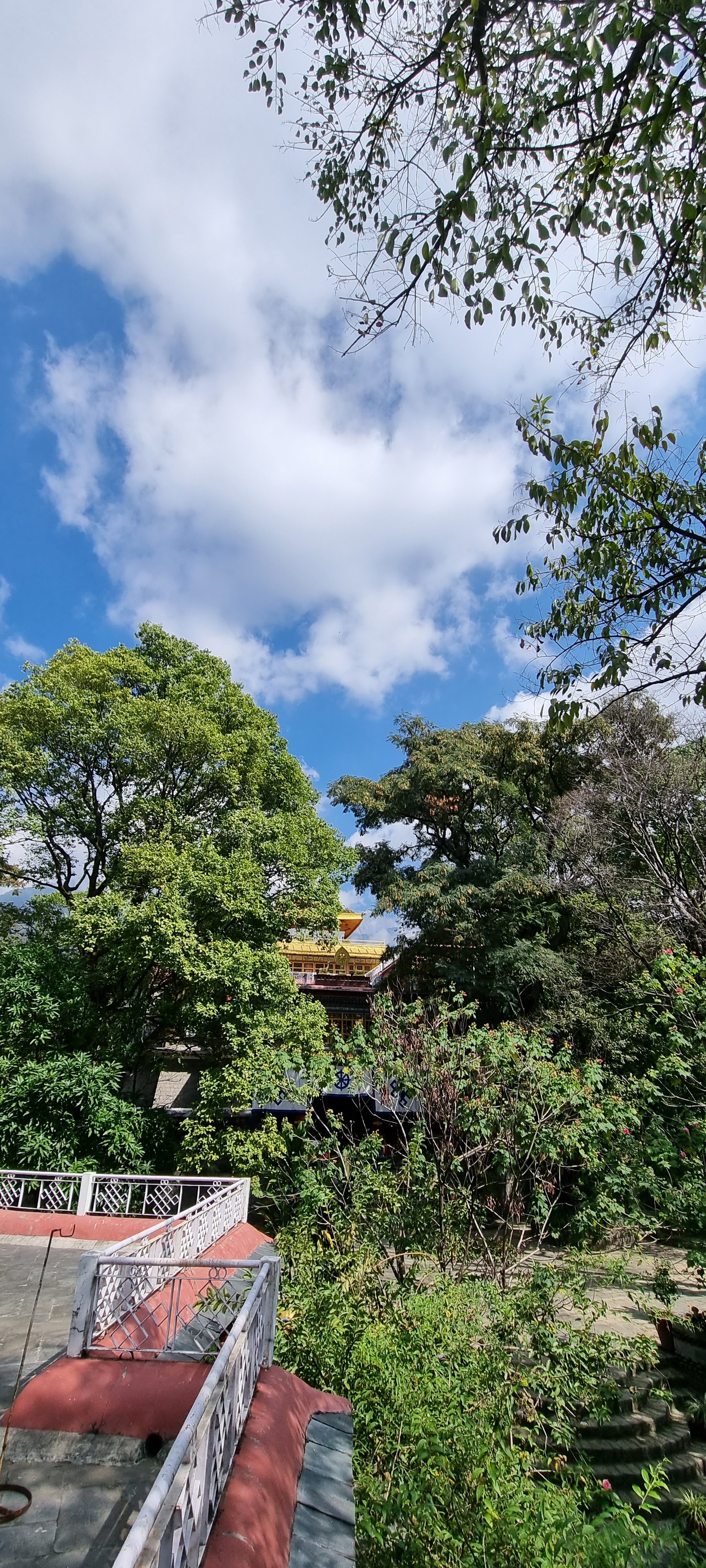
The beautiful Norbulingka monastery against the Dhauladhar range, the perfect backdrop for my Dharamkot Diaries.
This blog is part of a four part series. Read the other three blogs here:
The hills were abuzz today with excitement for the Hunter Moon. When planning a vacation we spend time and energy on where to stay and what to do. But the ingredient that truly makes or breaks a vacation is not really in your control – and that is the people you will interact with. The people you meet will tell you about the best masala chai in town, or where to go for the best pottery class, or like in our case tonight, tell you about why tonight’s full moon is so special. Tonight Medha and I found ourselves back in Morgan’s Cafe waiting for the moon to rise again. Our new friend, Mr Pankaj (he of the adventurous car rallies and interesting travel anecdotes) told us about the significance of the Hunter Moon. It is named after the time of year when animals fatten up in preparation for the colder months ahead. This is when hunting season is underway for hunters to stock up on meat for the winter. As we listened to Lucky Ali wafting through the chilly night air, I made a time lapse video of the beautiful moon rise. It’s so beautiful that we might return night after night to witness it.
Can a culture exist out of its homeland? How and for how long? The Norbulingka monastery is an answer to these questions.
I first read about the crisis in Tibet while in school in Bangladesh. One of my friends had just finished reading ‘Seven Years in Tibet’ and recommended the book to me. I went on to watch the movie, and loved it too. I then went on to read ‘My Land and My People‘ by HH the Dalai Lama. Since then I’ve looked forward to visiting the headquarters of the Tibetan government in exile, which is in Dharamshala.
Prior to 1951 Tibet was an independent and autonomous country. This changed in 1949 when Mao Zedong, the Chinese president decided it assert that China had authority over Tibet. In 1950 Zedong decided he wanted to ‘liberate’ Tibet and integrate it into China. This was done by ‘encouraging’ the Tibetans to adopt the Chinese language and customs. After much conflict a ‘Seventeen Point Agreement’ was signed which did guarantee Tibet a measure of autonomy and respect for the Buddhist religion, but also allowed China to establish a civil base in Lhasa. Clearly this agreement wasn’t very agreeable because in 1959 the Dalai Lama, fearing for his life, fled to India. India provided him and other Tibetan refugees a safe place in which to practice their culture and religion in peace.
The Norbulingka Insitute is the heart of Tibetan culture here in India. It endeavours to keep alive the centuries old Tibetan culture by running classes and apprenticeships in traditional Tibetan art forms. Visitors are allowed to walk around Norbulingka watching artists and craftsmen at work.
Our day at the Norbulinka monastery and it is incredible. It’s not only a monastery, but a shrine to Tibetan culture. As we walked around the place and observed the Thangka painting and wood carving classes, I felt an overpowering sense of gratitude for goodness and compassion of human beings. Governments in exile are undoubtedly about politics, but they are also about culture and heritage. To provide a safe and welcoming space for another culture and to support the preservation of that culture is humanity at it’s finest. We take back recipes for authentic Thupkas and rose quartz crystals for our wrists, but the biggest souvenir is the connection with our fellow men.

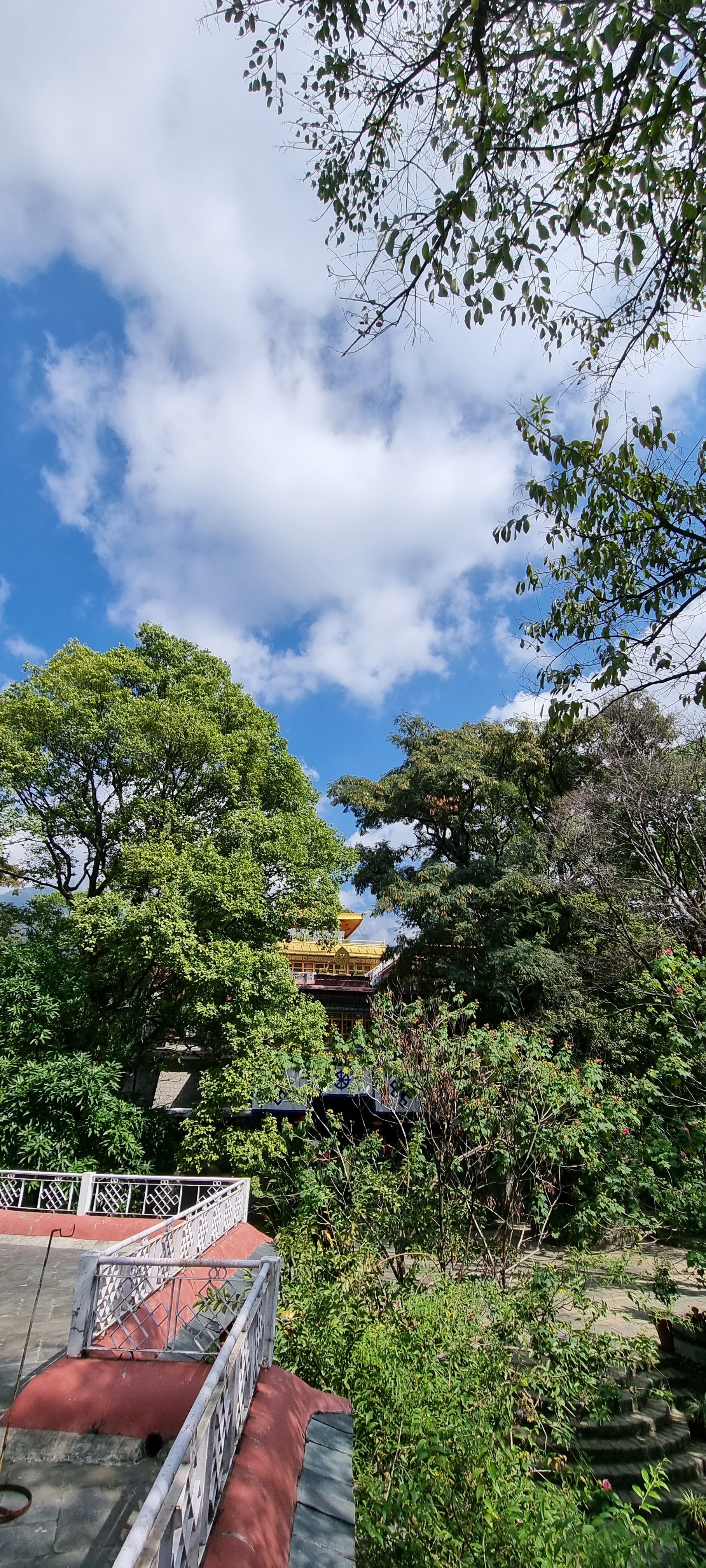
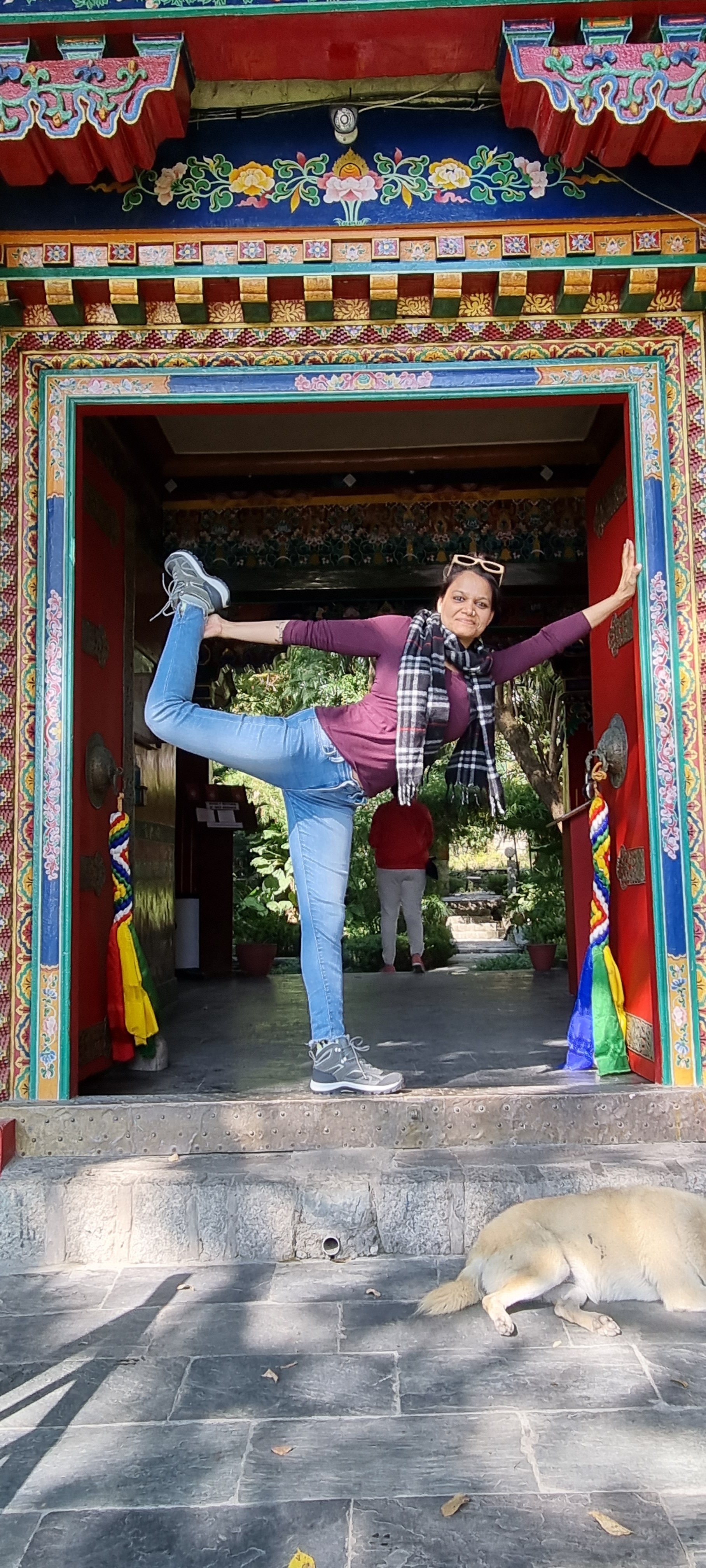
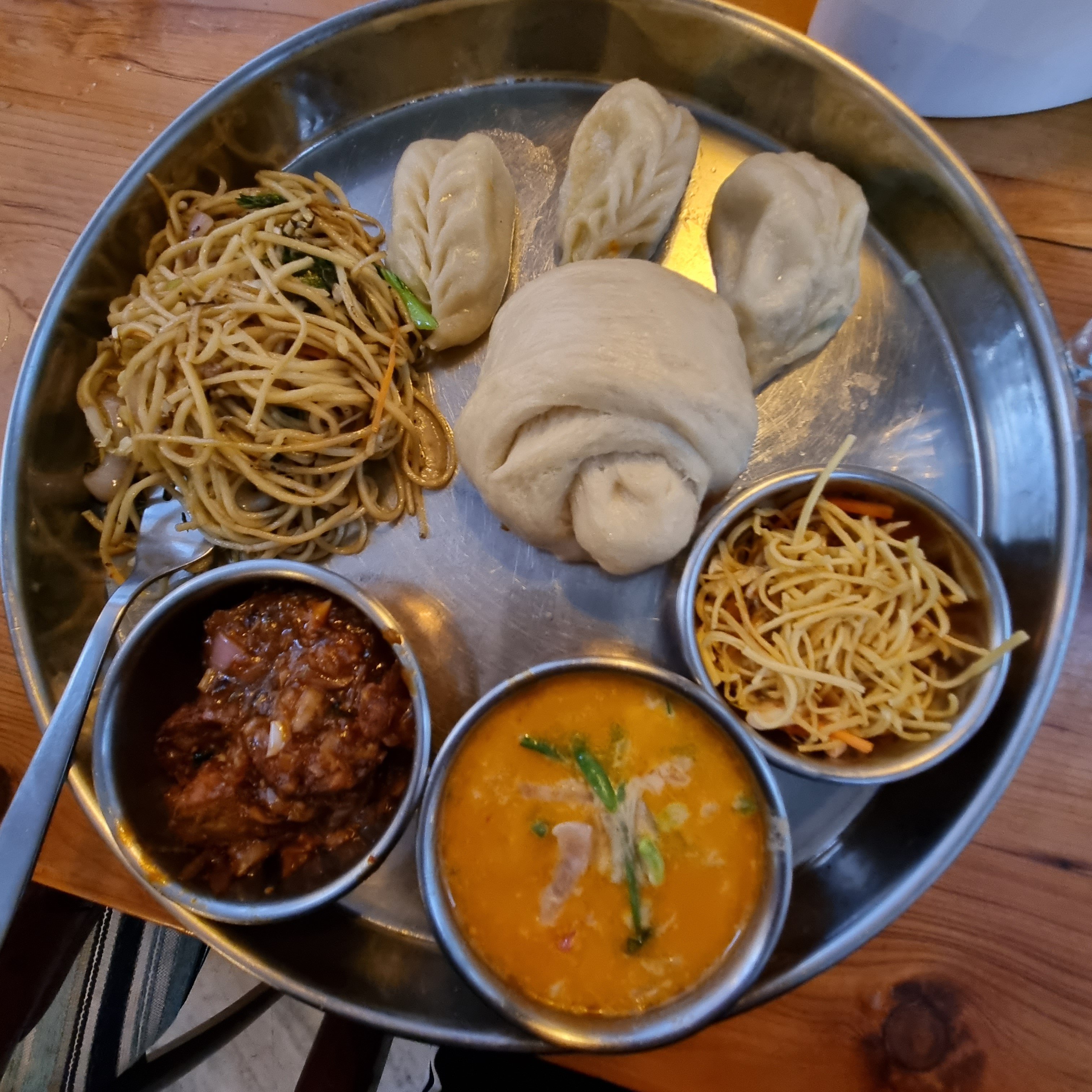
This blog is part of a four part series. Read the other three blogs here: